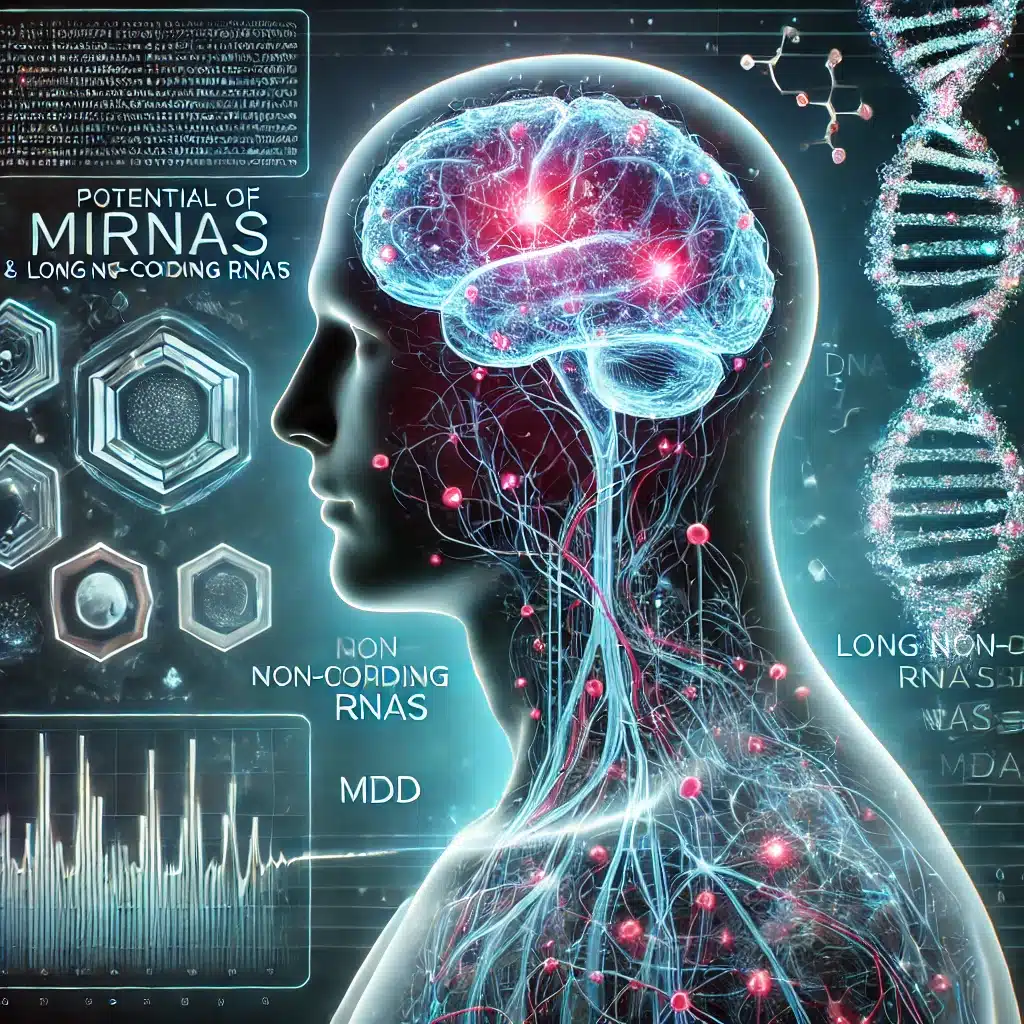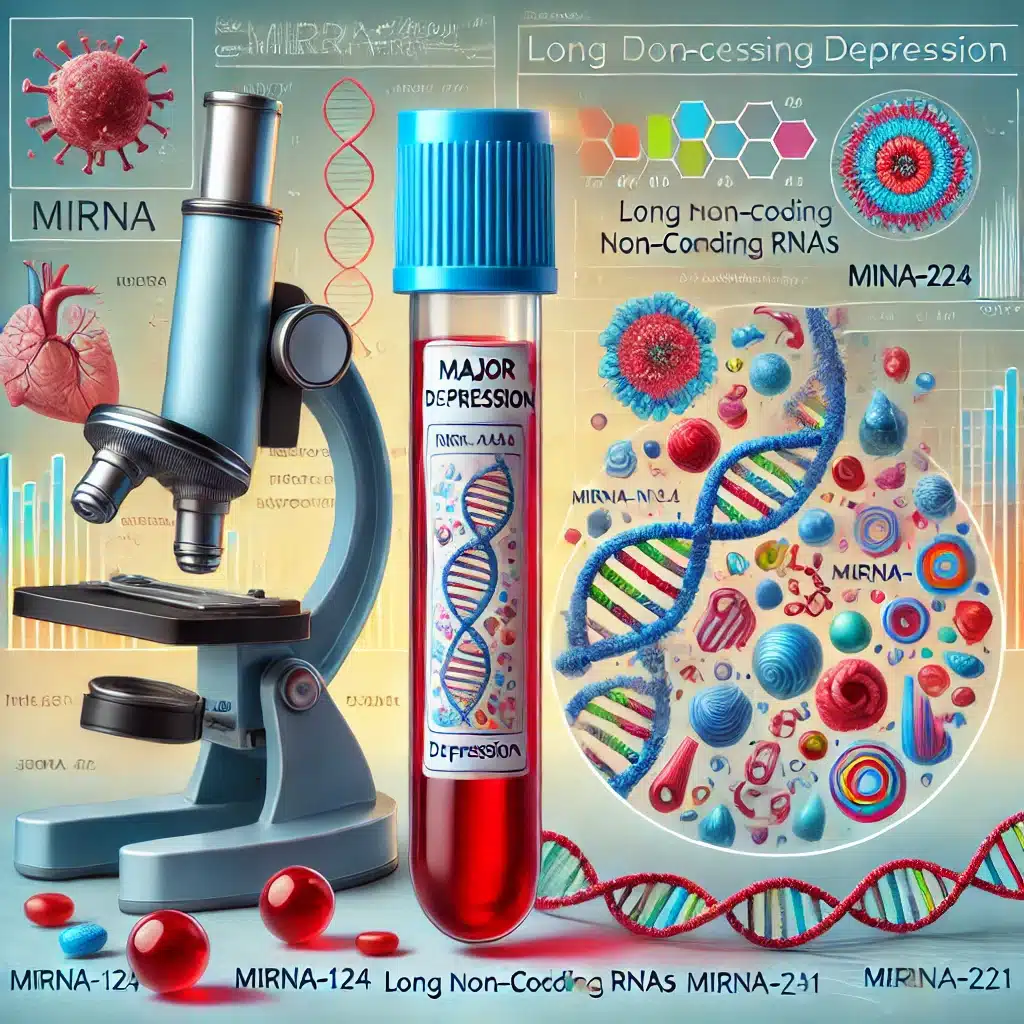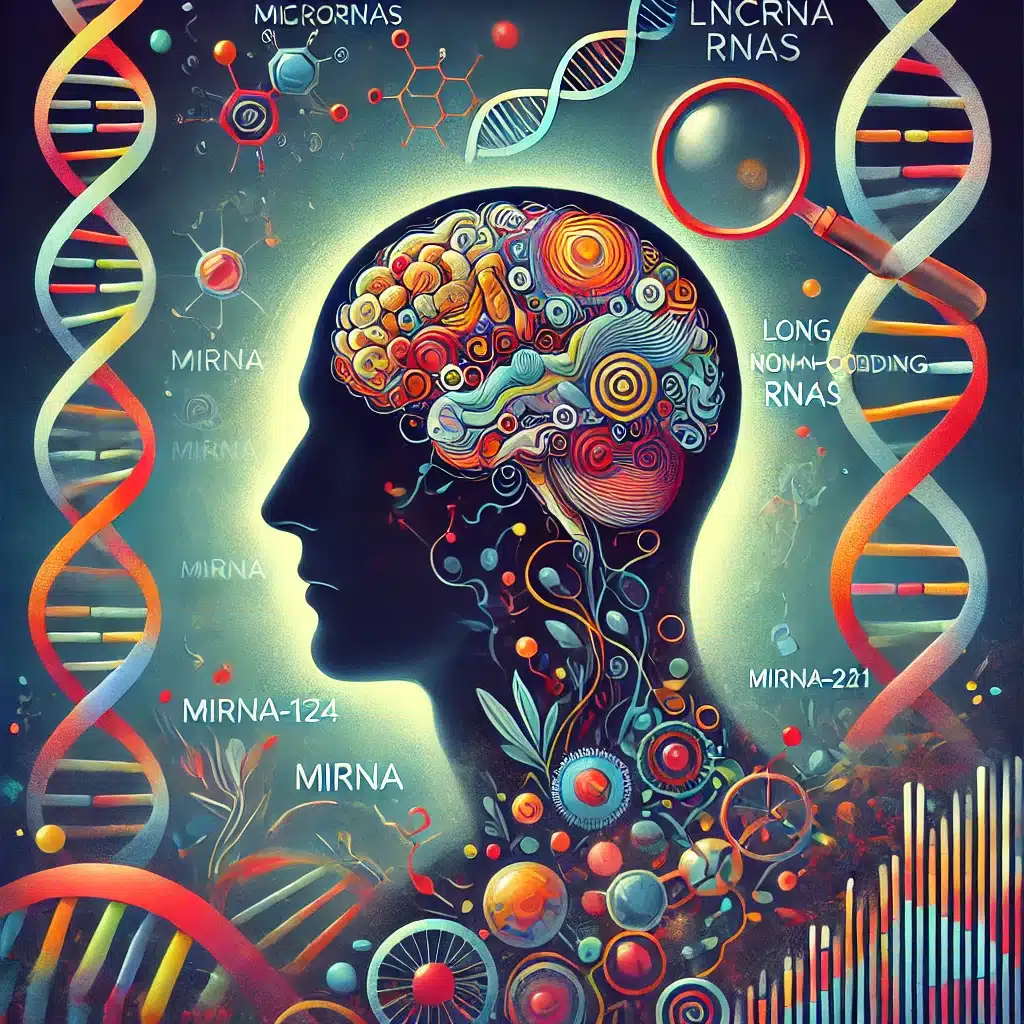The study suggests that microRNAs (miRNAs) and long non-coding RNAs (lncRNAs) in blood and brain tissues can serve as significant biomarkers for diagnosing and monitoring major depressive disorder (MDD).
Highlights:
- Diagnostic Potential: miRNAs and lncRNAs show significant variations in depressed patients, indicating their potential as diagnostic biomarkers for MDD.
- Treatment Monitoring: Changes in miRNA levels can predict treatment outcomes and help in adjusting therapy dosages based on patient responses.
- Key Biomarkers: miRNA-124 and miRNA-221 are highlighted as particularly relevant biomarkers, with miRNA-221 associated with neuronal death in the hippocampus.
- Therapeutic Response: Antidepressant treatment significantly alters the expression levels of certain miRNAs, making them useful for monitoring therapeutic efficacy.
- Heterogeneity & Challenges: There is significant heterogeneity in miRNA and lncRNA expression among different studies, necessitating further research to confirm these biomarkers’ clinical applicability.
Source: Biomedicines (2024)
Major Findings: Micro & Long Non-Coding RNA for Depression Diagnosis (2024)
1. Diagnostic Potential of miRNAs and lncRNAs
Significant Variations in Expression: The study reveals that miRNAs and lncRNAs exhibit significant variations in patients with major depressive disorder (MDD). These variations were observed in both peripheral blood samples and brain tissue biopsies from human subjects and animal models.
Key Biomarkers Identified: miRNA-124 and miRNA-221 were identified as particularly relevant biomarkers. miRNA-124 showed quantitative alterations common to both rodents and humans in brain tissues, while miRNA-221 was notably overexpressed in the cerebrospinal fluid and serum of MDD patients and in the hippocampus of mice.
2. Treatment Monitoring and Therapeutic Response
Predicting Treatment Outcomes: The study found that changes in miRNA levels could predict treatment outcomes, which is crucial for tracking severe cases and adjusting therapy dosages based on treatment responses.
Antidepressant Impact on miRNAs: Antidepressant treatments were shown to significantly alter the expression levels of various miRNAs in MDD patients. For instance, escitalopram treatment resulted in the upregulation of 28 miRNAs and the downregulation of 2 miRNAs over 12 weeks. Key miRNAs affected include miRNA-34c-5p, miRNA-103, miRNA-128, miRNA-132, miRNA-183, miRNA-192, miRNA-335, miRNA-494, and miRNA-22n.
3. Specific Findings on Key Biomarkers
miRNA-124: This miRNA demonstrated quantitative changes in brain tissues common to both rodents and humans, indicating its potential as a biomarker for MDD. However, testing via brain biopsy is deemed impractical and invasive.
miRNA-221: The overexpression of miRNA-221 in the cerebrospinal fluid and serum of MDD patients and in the hippocampus of mice suggests its role in neuronal death, which is associated with depression. This miRNA’s levels were also affected by stress and preoperative conditions, indicating its sensitivity to various physiological changes.
4. Heterogeneity and Research Challenges
Variability Among Studies: There is significant heterogeneity in the expression levels of miRNAs and lncRNAs across different studies. This variability presents challenges in developing a standardized diagnostic test panel for MDD.
Need for Further Research: To confirm the clinical applicability of these biomarkers, further research is needed to address the observed heterogeneity and to identify specific miRNAs and lncRNAs that can be reliably used in clinical practice.
5. Implications for Clinical Practice
Non-Invasive Testing: The findings support the potential for developing non-invasive diagnostic tests for MDD using blood samples to measure miRNA and lncRNA levels.
Guiding Individualized Therapy: Recognizing specific miRNAs and lncRNAs will assist in guiding individualized therapy and understanding the molecular mechanisms underlying MDD, leading to more effective treatments and improved patient outcomes.
How accurate are the correlations between these RNA biomarkers and diagnosis of depression?

Diagnostic Accuracy
The study highlights significant variations in miRNA and lncRNA levels in patients with major depressive disorder (MDD) compared to healthy controls, suggesting a strong correlation between these biomarkers and depression diagnoses. Key points regarding the accuracy include:
- Consistent Findings: Multiple studies identified miRNA-124 and miRNA-221 as consistently dysregulated in MDD patients, indicating their potential reliability as diagnostic markers.
- Statistical Significance: Several miRNAs, including miRNA-34c-5p, miRNA-103, miRNA-128, miRNA-132, miRNA-183, miRNA-192, miRNA-335, miRNA-494, and miRNA-22n, showed significant changes in expression following antidepressant treatment, supporting their role in diagnosing and monitoring MDD.
Study Results & Correlations
- Blood Samples: Studies found upregulated and downregulated miRNAs in the blood of MDD patients, with variations aligning with depression diagnoses in a significant number of cases. For example, miRNA-34b-5p and miRNA-34c-5p were consistently upregulated in certain studies.
- Brain Tissue Samples: miRNA-124 and miRNA-221 showed consistent dysregulation in post-mortem brain tissues of depressed patients, further validating their association with MDD.
- Animal Models: Rodent studies corroborated human findings, with miRNAs like miRNA-124 showing similar patterns of dysregulation in models of depression.
Limitations & Considerations
- Heterogeneity in Findings: Despite overall positive correlations, there was significant heterogeneity among studies, which could affect the generalizability of the results. Different studies reported varying sets of dysregulated miRNAs and lncRNAs.
- Small Sample Sizes: Some studies had relatively small sample sizes, which might limit the robustness and reproducibility of the findings.
- Peripheral vs. CNS Expression: There is still uncertainty about the correlation between miRNA and lncRNA expressions in the central nervous system (CNS) and peripheral blood, which could impact the accuracy of blood-based diagnostics.
Study Overview: RNA in Blood Samples to Diagnose Depression (2024)

The aim of this study was to investigate the potential role of two non-coding RNA species (microRNA and long non-coding RNA) in peripheral blood samples and brain tissue biopsies from patients with major depressive disorder (MDD) to enhance diagnostic accuracy and predict treatment outcomes.
Sample
- Subjects: The study included both human subjects diagnosed with MDD and animal models (rodents) used for depression research.
- Controls: Healthy human subjects were used as controls for comparison.
Methods
- Literature Review: Relevant papers were retrieved from the PubMed database using keywords related to MDD, microRNA, long non-coding RNA, blood compartments, biomarkers, and brain biopsies.
- Inclusion Criteria: Only original articles in English, case-control studies on human subjects with MDD, studies on animal models of depression, and those evaluating the expression of miRNA and lncRNA were included.
- Exclusion Criteria: Non-original papers, duplicates, non-English articles, and review articles were excluded.
- Data Collection: Titles, abstracts, and study procedures were screened to identify relevant studies. A total of 24 articles were included in the final review after excluding non-relevant papers.
Limitations
- Sample Size & Homogeneity: Limited subject samples and poor homogeneity in some studies may lead to ambiguous and questionable results.
- Translational Challenges: Difficulty in translating findings from animal models to human clinical applications.
- Lack of Specificity: Insufficient specificity in distinguishing depression from other mental disorders, such as schizophrenia and bipolar disorder.
- Peripheral vs. CNS Expression: Uncertainty about whether peripheral ncRNAs reflect CNS expression, complicating the use of these biomarkers in clinical practice.
References
- Study: Evaluating the Connection between MicroRNAs and Long Non-Coding RNAs for the Establishment of the Major Depressive Disorder Diagnosis (2024)
- Authors: Cătălin Prodan-Bărbulescu et al.







